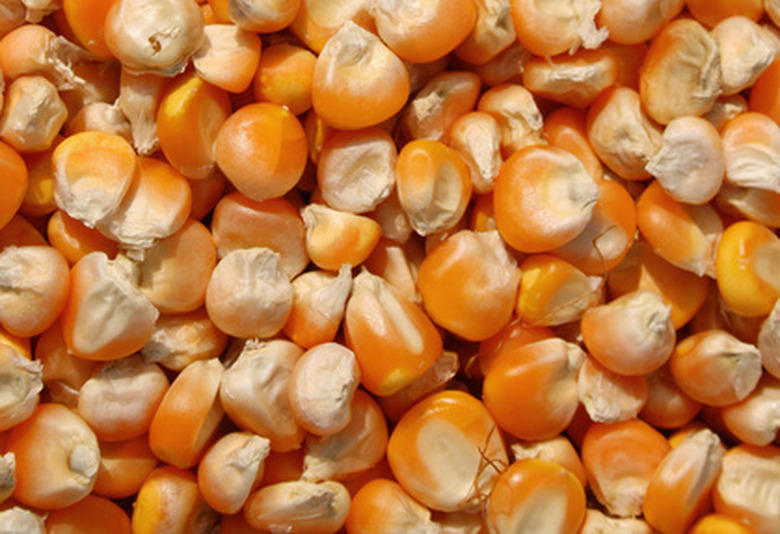How To Soak Corn Seed Before Planting
Corn seed germination requires water and warmth. The hard shell of the seed is hydrated by soaking so the embryonic plant can send out a tiny root and sprout. All seeds need their outer shells to be hydrated before they will sprout. Other seeds with hard shells such as beans, peas, squash and eggplant benefit from soaking as well. Try your hand at sprouting corn seed from an organic whole foods store selling dried corn and corn for popping. Another alternative is to buy sweet corn on the cob at a farmer's market, dry the corn on the husk and then remove it for germinating and planting. Corn seed is available through seed catalogs and nurseries.
- Corn seed germination requires water and warmth.
- The hard shell of the seed is hydrated by soaking so the embryonic plant can send out a tiny root and sprout.
Step 1
Inspect the corn seed for any mold or dark spots. Make sure the seed is whole and not broken.
Step 2
Heat distilled water until it is warm, but not hot, to the touch. It is possible to use tap water but that has chemicals, salts and chlorine.
Step 3
Place the corn seed in a container with a lid. Cover the seeds with the warm water. Close the lid.
- Inspect the corn seed for any mold or dark spots.
- Heat distilled water until it is warm, but not hot, to the touch.
Step 4
Store the corn seed in a warm place like over the fridge or on top of the clothes dryer for 24 hours.
Step 5
Using the strainer, remove corn seed from the water after the 24 hours and plant immediately.
Prepare Corn Seed For Next Year's Planting
If you want to save seeds, your corn must be open-pollinated, otherwise known as "heirloom." Before you begin to harvest your corn for eating, select the ears you want to save seed from. Ideally, you want to take seed from 100 ears to avoid inbreeding depression. Choose plants that grew well. If your corn is almost dry and the weather report says you are about to get heavy rain or frost, pull up the stalks by the roots and hang them upside down in a dry shelter to finish drying. Right after the milk stage, in other words, when a kernel pressed with a thumbnail will no longer produce a milky liquid, pick the corn and peel back or remove the husk. Hang the cobs to dry in a dry shelter.
- Store the corn seed in a warm place like over the fridge or on top of the clothes dryer for 24 hours.
- Using the strainer, remove corn seed from the water after the 24 hours and plant immediately.
Things Needed
- Corn seed
- Water, preferably distilled
- Container, airtight
- Strainer
Warning
Soaking longer than 24 hours may encourage the seed to sprout prematurely–which is a waste of energy for the seedling if it's not in the ground.
Tip
Organic corn seed is available at some online sites. It's preferable for soaking. Commercial corn seed often has fungicides dusted onto the seed to prohibit damping off disease. Soaking the corn seed removes the fungicide. The seed must be planted immediately after the 24 hours.
